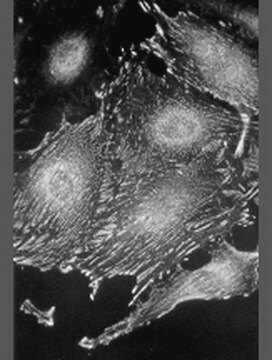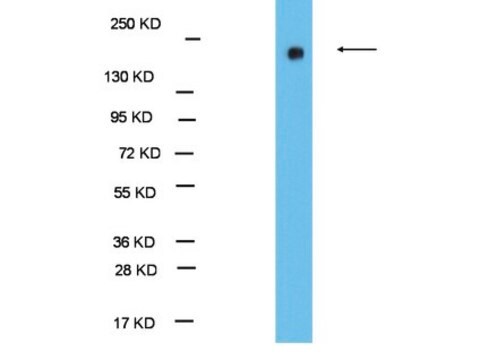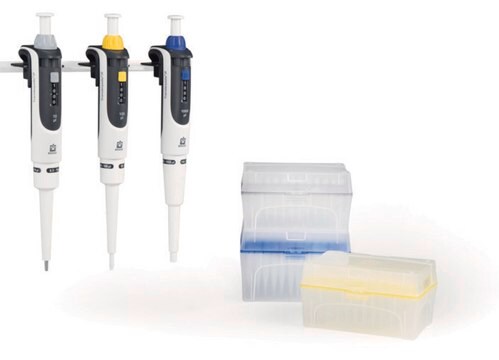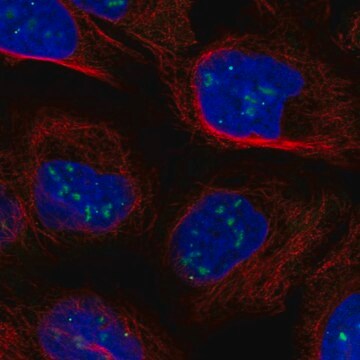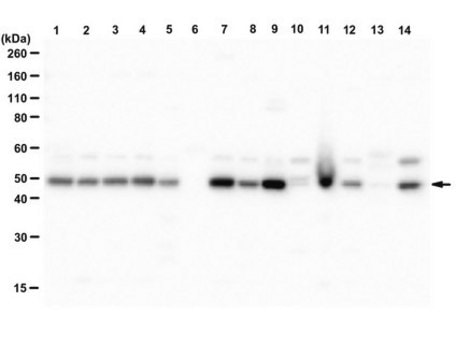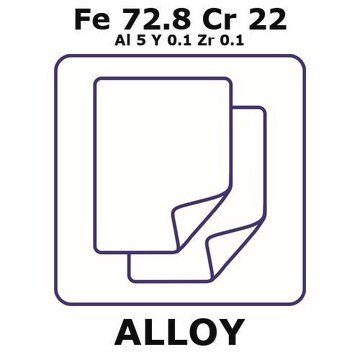05-637-AF647
Anti-Bmi-1 Antibody, clone F6, Alexa Fluor™ 647
clone F6, from mouse, ALEXA FLUOR™ 647
Synonim(y):
Polycomb complex protein BMI-1, Polycomb group RING finger protein 4, Bmi-1
About This Item
Polecane produkty
pochodzenie biologiczne
mouse
Poziom jakości
białko sprzężone
ALEXA FLUOR™ 647
forma przeciwciała
purified antibody
rodzaj przeciwciała
primary antibodies
klon
F6, monoclonal
reaktywność gatunkowa
human, monkey
reaktywność gatunkowa (przewidywana na podstawie homologii)
rabbit (based on 100% sequence homology), mouse (based on 100% sequence homology), rat (based on 100% sequence homology)
metody
immunocytochemistry: suitable
izotyp
IgG1
numer dostępu NCBI
numer dostępu UniProt
Warunki transportu
wet ice
docelowa modyfikacja potranslacyjna
unmodified
informacje o genach
human ... BMI1(648)
Opis ogólny
Immunogen
Zastosowanie
The unconjugated version (Cat. No. 05-637) is also shown to be suitable for Western blotting, Immunocytochemistry, and Immunohistochemistry applications.
Epigenetics & Nuclear Function
Nuclear Receptors
Jakość
Immunocytochemistry Analysis: A 1:100 dilution of this antibody detected Bmi-1 in HeLa cells.
Opis wartości docelowych
Postać fizyczna
Przechowywanie i stabilność
Inne uwagi
Informacje prawne
Oświadczenie o zrzeczeniu się odpowiedzialności
Nie możesz znaleźć właściwego produktu?
Wypróbuj nasz Narzędzie selektora produktów.
Kod klasy składowania
10 - Combustible liquids
Klasa zagrożenia wodnego (WGK)
WGK 2
Temperatura zapłonu (°F)
Not applicable
Temperatura zapłonu (°C)
Not applicable
Certyfikaty analizy (CoA)
Poszukaj Certyfikaty analizy (CoA), wpisując numer partii/serii produktów. Numery serii i partii można znaleźć na etykiecie produktu po słowach „seria” lub „partia”.
Masz już ten produkt?
Dokumenty związane z niedawno zakupionymi produktami zostały zamieszczone w Bibliotece dokumentów.
Nasz zespół naukowców ma doświadczenie we wszystkich obszarach badań, w tym w naukach przyrodniczych, materiałoznawstwie, syntezie chemicznej, chromatografii, analityce i wielu innych dziedzinach.
Skontaktuj się z zespołem ds. pomocy technicznej